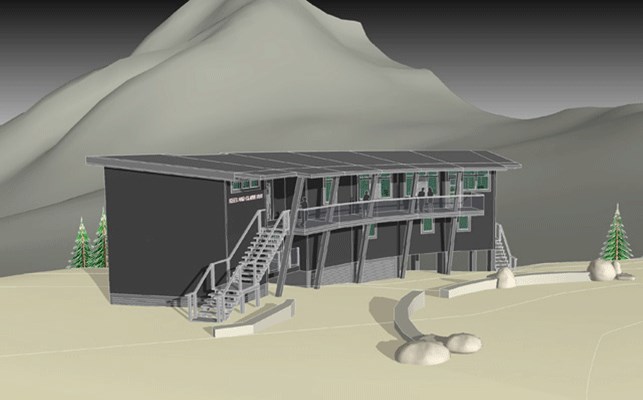It's been a long road, but construction on the much-anticipated Spearhead Huts system has begun, opening a new chapter in the evolution of backcountry travel through Garibaldi Provincial Park.
Following final approval from BC Parks, officials last week broke ground at the site of the first of three huts planned along the 40-kilometre Spearhead Traverse. Coming a decade after the concept was first introduced, and some 50 years since local Karl Ricker first conquered the Spearhead, finally getting shovels into the ground was long overdue, said Jayson Faulkner, chair of the Spearhead Huts Society (SHS).
"Oh my god, what a long process," he said. "Everybody involved was obviously very excited, although there was lots of drama near the end."
A series of last-minute logistical issues proved challenging for building crews, who not only had to contend with a shortened construction window due to Whistler's late-season snowpack, but a lack of available heavy-lift helicopters with much of the province battling wildfire.
"Luckily, it looks like we salvaged the summer in just the nick of time. Probably another two weeks from now, if we weren't started on excavation, there was no way we'd beat the snow," explained Reid Madiuk, owner-operator of Coast Essential Construction, which is donating in-kind services to the project.
The 11th-hour hurdles mean the construction of the Kees and Claire Hut's roof structure will be saved for next summer, with the hut projected to open near Russet Lake in January 2019. The Mount Pattison and Mount Macbeth huts will be built as more funding is secured to cover the remaining project costs.
A non-profit society, the SHS will need to rely heavily on fundraising efforts to make the estimated $5.5-million project a reality. So far, Faulkner has been heartened by the support the society has received.
"None of this would have happened without so much good will floating around," he said.
But not everyone is behind the project in its current form. Although he acknowledged it's still a work in progress, Whistler Search and Rescue (WSAR) manager Brad Sills said the safety plan being devised for the hut system needs "considerable work."
"Our concern is that the huts are at high elevation, and we know the weather in the Spearhead through the winter is terrible. So if we're getting calls and having to fly into these places, we're putting our guys into a lot of risk," he added.
The SHS is working on an agreement to reserve beds for mountain guides in exchange for first response. But Sills sees a potential conflict in having commercial guides with paying clients attend to emergencies in the Spearhead.
"A guide, if he's at the Spearhead Huts, in all likelihood has clients that he's legally responsible for. Is it really practical to think that he's somehow going to ditch these people and go and aid somebody else?" he asked.
It's standard practice for guides to respond to backcountry emergencies and, if necessary, leave clients behind, Faulkner said.
"It's part of the responsibility as a professional guide that if you see somebody in trouble, you offer assistance," he added.
Sills, who operates an adventure lodge in the Callaghan Valley, has also called for a guide to be stationed at the huts whenever guests are present, a request Faulkner believes is impractical.
"The mountain guides will be there a lot, because they'll be on commercial trips, but it wouldn't be realistic to have someone stationed there full time," he said, adding that it's not the proponent's responsibility for public safety in a provincially-controlled park.
Of particular concern for Sills is the increased level of backcountry use the huts will bring to the tricky terrain in and around the Spearhead Range, which he said is already WSAR's "highest response area." Once completed, Faulkner said the huts are expected to bring around 5,000 visitors annually to the range.
"We're going to be fairly vocal on this until we see a plan that mitigates the risk to our members responding," said Sills. "If we're doing 50 calls a year now, I think it's reasonable to say that there will be at least a 10-per-cent increase (once the huts are completed)."
For more information, or to volunteer on the project, visit www.spearheadhuts.org.




